BCC
BCC (Basal cell carcinoma) is the most common form of skin cancer and in deed the most common form of all cancers in mankind. About 75% of all skin cancers are BCC, 15-20% are SCC and less than 5% are Melanomas.
BCCs tend to grow slowly as a result they are most often curable and cause minimal damage when detected and treated early.
BCC is the cancer of germinating cells of our skin. These cells are called basal cells and malignancy of which is Basal Cell Carcinoma or BCC.
BCC is the result of DNA damage from exposure to ultraviolet (UV) radiation (sun light or indoor tanning).
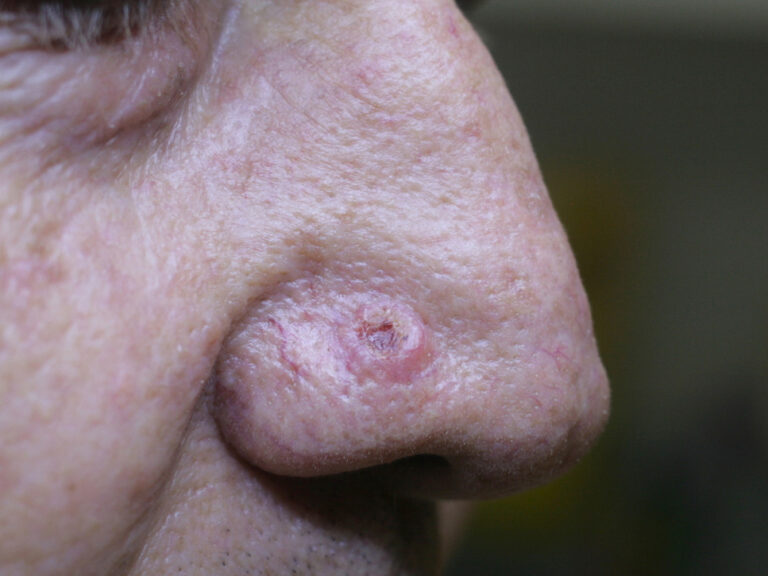
- BCCs are the most common type of skin cancer, and are often completely curable.
- BCCs are usually found on areas of the body exposed to the sun. predominantly on head, neck and torso
- BCCs tend to grow slowly, it may take several months until you notice you have one.
- There are many different treatment choices for BCC.
- Prevention is better than treatment. Be Sunsmart and avoid BCC
Risk factors of BCC
BCC generally tends to occur in older individuals, although they may occur in young adults and even children. Risk factors for BCC are:
- Chronic sun exposure, especially in people with fair skin, light hair, and blue, green, or grey eye
- Burns
- Exposure to radiation
- Arsenic intoxication
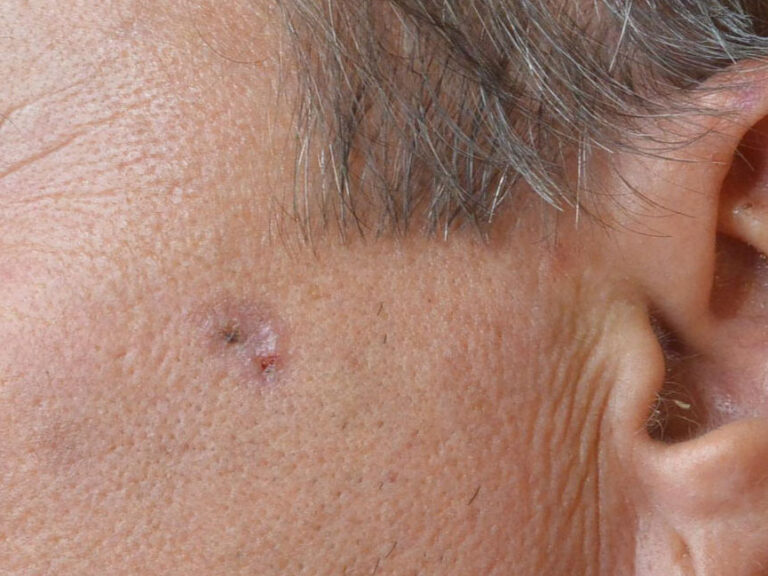
What does BCC look like?
BCC comes in different shapes and forms. Most common forms of BCCs are superficial and nodular BCCs. Superficial BCCs appear like a scaly or dry area that is pale or pink in colour. Nodular BCCs present as a pearly pink lump. BCC lesions are fragile and may bleed and become inflamed, and dead tissue may slough off (ulcerate). Some BCCs heal then break down again. There are rare but aggressive types of BCCs such as infiltrative and morphoeic BCCs which usually look like a scar or a soft white patch. These BCCs tend to be deeper in skin and best seen by stretching the affected skin with your fingers.
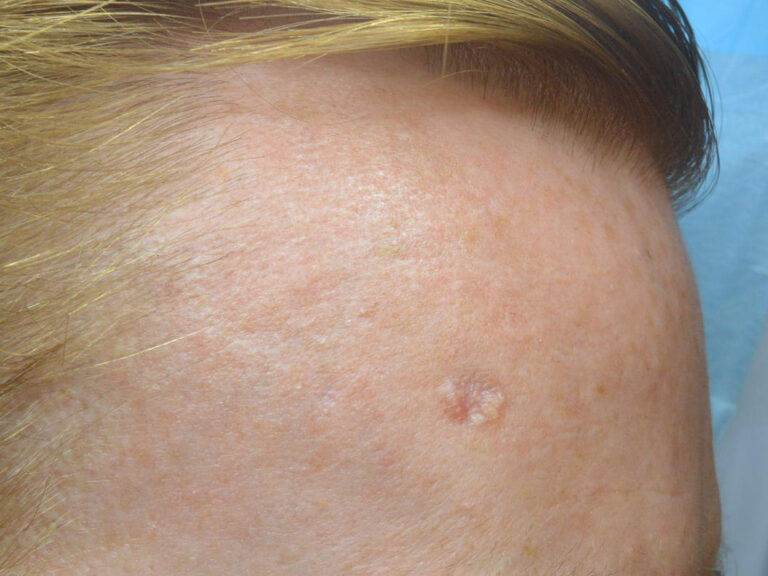
BCCs tend to grow slowly and very rarely ( 1 in 1000) spread to other parts of the body. However, if BCC is left untreated or grows larger than 5 cm, it may grow deeper into the skin and damage nearby tissue . That is why BCC was famous as rodent ulcer in old medical literature. This may make treatment more difficult and increase the chance of the BCC returning.
When to see your doctor
Early detection is the key to a successful treatment. If you notice any new spots or an existing spot that changes size, shape or colour, it is necessary to see your skin cancer doctor.Check your own skin every 3 months and get to know your spots looking for changes.
Make an appointment with your skin cancer doctor, if you find a spot, blemish, freckle or mole that:
- is different from other surrounding spots on your skin
- changing size, shape, colour or texture
- not healing
- is itchy, ulcerated or bleeds
Treatment options for BCC
BCC have different forms and accordingly different behaviour. Some BCCs are very aggressive and require more radical treatment. There are different treatment options available for BCC. Surgical removal ( excision) is considered the most effective option with highest success rate. Skin cancer is surgical removed and sent to pathology for microscopic examination to make sure it is completely removed. Surgical treatment however could leave a scar and the art of the skin cancer surgeon is to minimise the scarring.
There are luckily non surgical treatments available for less aggressive low risk BCCs where surgical excision is not desirable. Photodynamic therapy is the treatment of choice in our clinic. It is highly effective and has the best cosmetic results.
Topical treatment with imiquimod (Aldara), cryotherapy with liquid nitrogen, radiation therapy, curettage and diathermy can also be used to treatment BCCs. Your doctor would discuss the most suitable treatment based on your individual circumstances.
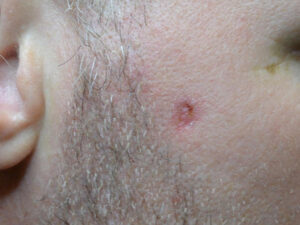
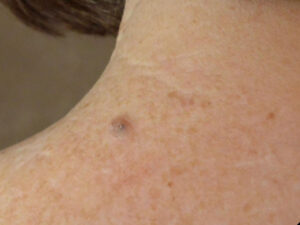
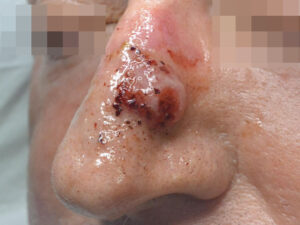
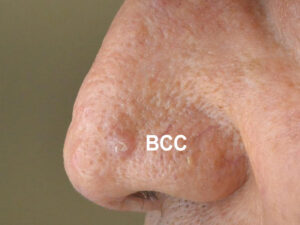
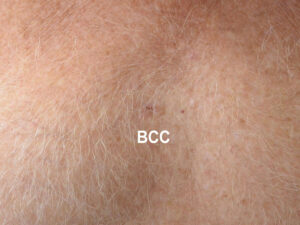
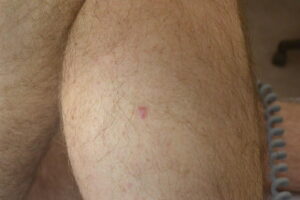
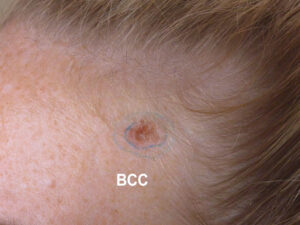
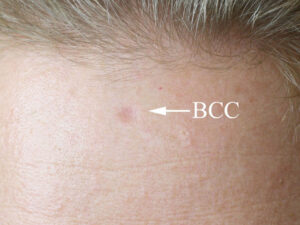
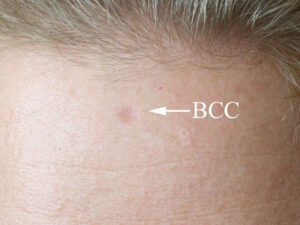
Prevention
BCC is predominantly related to excessive exposure to UV light (sunlight or tanning beds). Avoiding sun burn and excessive exposure to sunlight, using broad spectrum sunscreen, hat, sunglasses would reduce the risk of BCC.
After having one BCC there is a 50% chance of developing another BCC later on, some where else in your body. The subsequent BCCs are not related to the first BCCs spreading throughout the body.
We recommend having more regular skin checks by your skin cancer doctor every 6 to 12 months. It is important that the skin be self-examined at least every 3 months , and any suspicious new lesions reported to your doctor.


